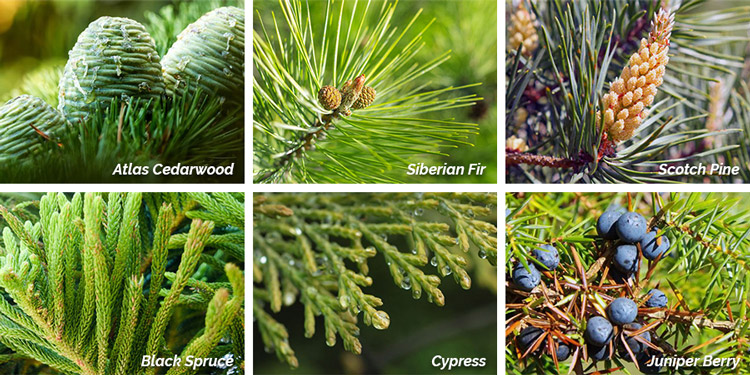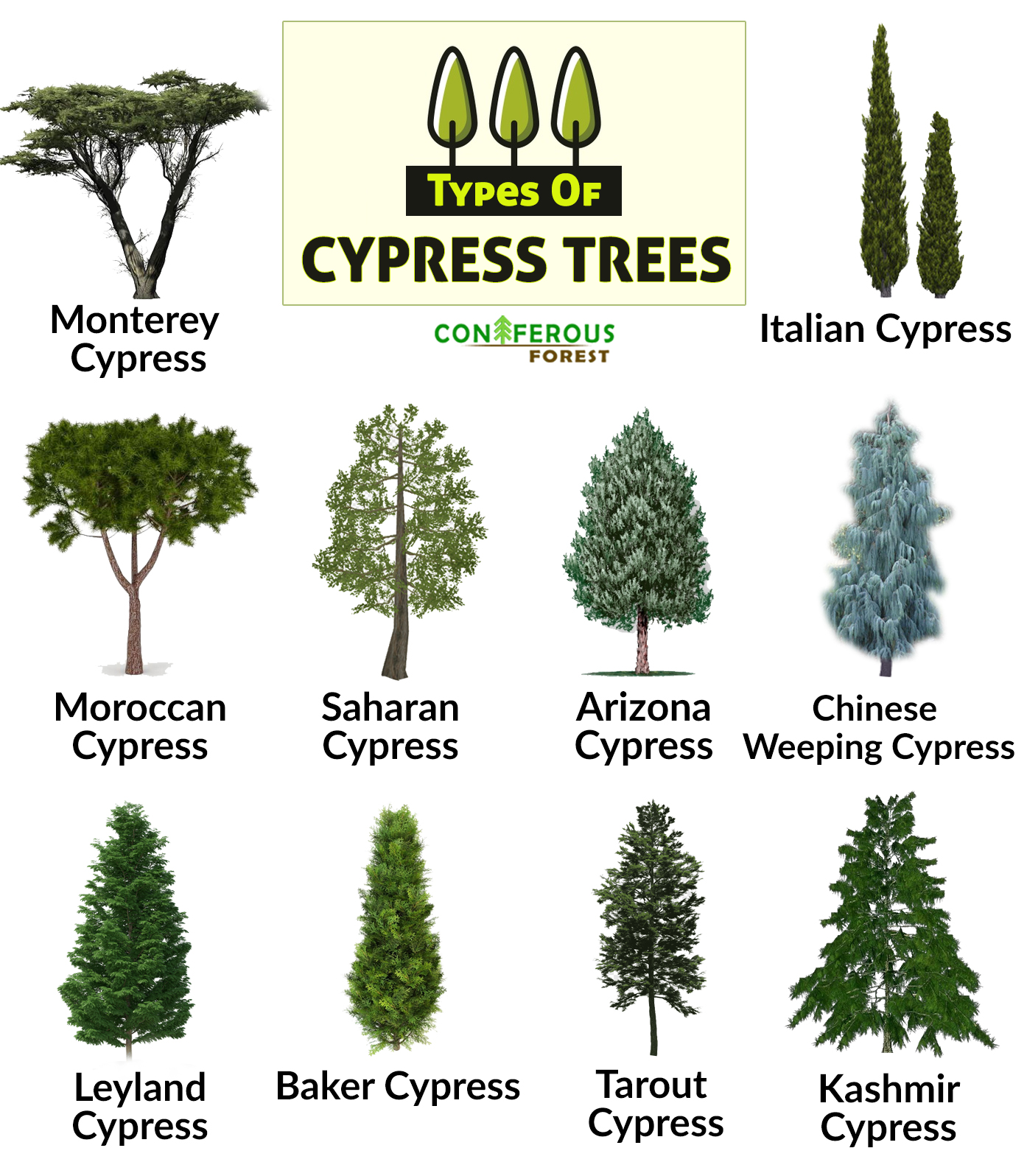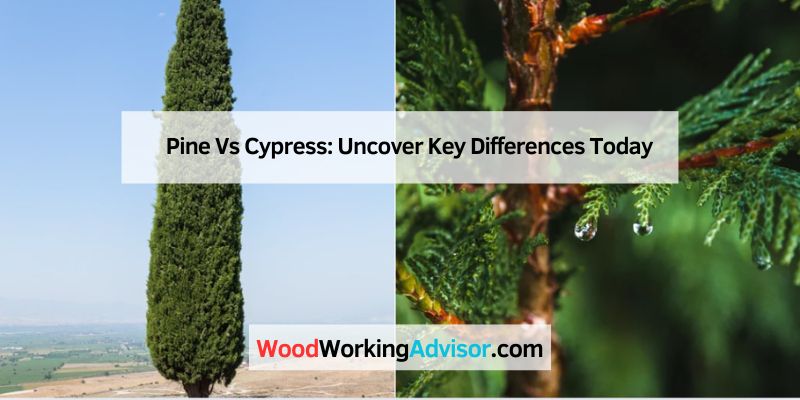Are you planning a new woodworking project or perhaps considering the best type of wood for your backyard landscaping? You’re likely weighing your options and might find yourself torn between pine and cypress.
Both of these woods offer unique benefits and aesthetic qualities, but how do you decide which is right for your needs? Imagine the satisfaction of making an informed choice that perfectly complements your space, whether it’s the inviting warmth of pine or the elegant durability of cypress.
By understanding the characteristics, benefits, and potential drawbacks of each, you’ll be empowered to make the best decision for your project. Stick around as we delve into the details, helping you unlock the perfect match for your creative vision.

Credit: www.aromaweb.com
Pine Characteristics
Pine trees come in many types. Some are short, others are tall. The Eastern White Pine is very popular. It can grow very high. The Ponderosa Pine is found in the west. Its bark smells sweet. The Scots Pine is from Europe. It is also called the Scotch Pine. Each type has its own unique look.
Pine trees grow in many places. They like places with good sunlight. Pines grow fast when young. They can live for many years. Some pines grow straight and tall. Others spread wide. Their needles stay green all year. This makes them special.
Pine trees love sunny areas. They need well-drained soil to grow well. Cold weather is not a problem for them. They can handle snow and ice. Pines do not like very wet soil. Too much water can hurt them. They are strong and can live in many places.
Cypress Characteristics
Cypress trees are diverse. There are different types. Bald Cypress grows near water. Mediterranean Cypress is tall and slim. Monterey Cypress is unique to California. Each type has special traits. Their leaves are needle-like.
Cypress trees grow fast. They can reach great heights. Some grow over 70 feet tall. Their trunks are thick. They have strong roots. These trees live for many years. Longevity is their secret. Some survive hundreds of years.
Cypress trees need wet soil. They thrive near lakes and rivers. Sunlight is important. They like full sun. Some types tolerate dry soil. Others need more water. Cypress trees adapt well. They survive in various climates.
Wood Properties
Pine wood has a smooth texture with straight grain. It is soft and easy to work with. Cypress wood has a fine texture and a close grain. Its grain is tighter than pine. Cypress often has more knots, giving it character. Pine is pale yellow or white, while cypress is darker.
Pine wood is less durable than cypress. It can warp or crack if wet. Cypress is stronger and resistant to water. It lasts longer outdoors. Pine is lighter, making it easy to move. Cypress is heavier and sturdy.
Pine is used in furniture and construction. It is cheap and common. Cypress is used for boats and doors. It withstands weather well. Pine is in many homes, while cypress is for special projects. Both are popular for different reasons.

Aesthetic Differences
Pine trees often have a light brown bark. Cypress trees show a dark brown or gray hue. The wood of pine is creamy or pale yellow. Cypress wood is reddish-brown and rich in tone.
Pine trees grow in a tall, straight shape. Cypress trees have a more varied form. Some cypresses grow wide and spread out. Others are thin and column-like. The shapes add beauty to gardens.
Pine needles are long and slender. Cypress leaves are short and scale-like. They feel soft to touch. Pine cones are hard and woody. Cypress cones are round and small. Both trees have unique beauty.
Resilience And Adaptability
Pine and Cypress trees grow in many places. Pine trees love cold and can live in snowy areas. Cypress trees enjoy warm weather and often grow in hot places. Both trees show great strength in hard weather.
Pine trees can resist some bugs and diseases. But sometimes they need help. Cypress trees are strong against many pests. They need less care to stay healthy. Both trees work hard to stay strong.
Pine trees can live for many years. Some reach 100 years old. Cypress trees also have long lives. They can live for many centuries. Both trees have stories to tell.

Credit: brazilianlumber.com
Ecological Roles
Pine trees offer shelter to many animals. Birds build nests on their branches. Squirrels love to hide acorns in pine trees. Cypress trees grow near water. They provide homes for frogs and turtles. Deer and other animals find shade under cypress trees. Both trees are important for wildlife.
Pine trees help stop soil from washing away. Their roots hold the soil tight. Cypress trees grow in wet areas. They help keep the water clean. Roots filter dirt and waste from the water. Both trees protect the earth and water around them.
Pine forests are home to many species. From insects to large animals. Cypress wetlands are rich in life. Different fish, birds, and plants live there. Both trees add to the world’s biodiversity. They make it rich and diverse.
Economic Importance
Pine trees are very important for the timber industry. They grow fast and straight. This makes them great for making wood. Cypress wood is also strong and long-lasting. It is used in boats and buildings. Both types of wood are valuable. They help many people have jobs. Wood from these trees is useful for furniture and construction.
Pine trees look nice in parks and gardens. They are green all year. People like to plant them for shade. Cypress trees are also pretty. They have a unique shape. This makes them a popular choice for yards. Both trees make outdoor spaces beautiful.
Pine trees have special meanings in many cultures. They stand for strength and wisdom. People use them in festivals and ceremonies. Cypress trees are symbols of peace and protection. They are important in different traditions. These trees have a strong place in stories and art.
Environmental Impact
Pine trees absorb a lot of carbon dioxide from the air. They store carbon in their leaves and wood. Cypress trees also absorb carbon. They are known for storing it in soil. Both trees help reduce carbon in the air. This is important for our planet’s health.
Pine trees have strong roots. These roots hold the soil tightly. This stops soil from washing away. Cypress trees grow in wet areas. Their roots keep soil from moving. Both trees help in preventing erosion. They protect landscapes from damage.
Pine trees clean the air. They filter harmful gases like sulfur dioxide. Cypress trees also clean air. They trap dust and pollutants. Both trees improve air quality. They are natural air purifiers.

Credit: www.coniferousforest.com
Frequently Asked Questions
Is Cypress Better Than Treated Pine?
Cypress offers natural rot resistance and durability. Treated pine is more affordable and readily available. Cypress is better for aesthetics and longevity, while treated pine suits budget-friendly projects. Choose based on your specific needs and budget.
How To Tell Cypress From Pine?
Cypress has scale-like leaves and grows in wet areas, while pine has needle-like leaves and prefers dry soil. Cypress wood is lighter, often used in outdoor projects, whereas pine wood is heavier and commonly used in indoor furniture. Cypress trees have a unique aroma different from pine’s resinous scent.
Does Cypress Smell Like Pine?
Cypress and pine have distinct scents. Cypress smells woody, fresh, and slightly earthy, unlike pine’s sharper, resinous aroma. Their scents are unique, but both evoke nature’s essence. Cypress is less intense than pine, making it popular for subtle fragrances.
What Is Better, Cypress Or Pine Mulch?
Cypress mulch lasts longer and repels insects, while pine mulch enriches the soil and is more affordable. Choose based on preference and budget. Both mulches suppress weeds and retain moisture effectively. Cypress is ideal for decorative purposes, while pine is better for improving soil health.
Conclusion
Choosing between pine and cypress depends on your needs. Pine offers a warm, rustic look. It’s affordable and easy to work with. Cypress is durable and resistant to decay. It’s great for outdoor projects. Both woods have unique qualities. Consider your budget and project requirements.
Think about the appearance you desire. Evaluate the environment where the wood will be used. Each wood has its advantages. Make a choice that suits your style and purpose. Whether indoor or outdoor, pine and cypress can complement your space.

